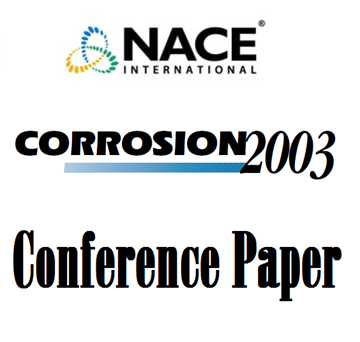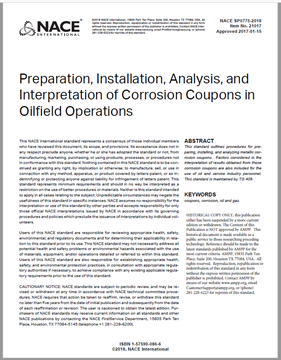Search
03574 EVALUATION OF CHEMICAL TREATMENTS IN NATURAL GAS SYSTEMS VS. MIC AND OTHER FORMS OF INTERNAL CORROSION USING CARBON STEEL COUPONS
Also Purchased
03544 MICROSCOPIC DIFFERENTIATION OF INTERNAL CORROSION INITIATION MECHANISMS IN NATURAL GAS PIPELINE SYSTEMS
Product Number:
51300-03544-SG
ISBN:
03544 2003 CP
Publication Date:
2003
$20.00
SP0775-2018 "Preparation, Installation, Analysis, and Interpretation of Corrosion Coupons in Oilfield Operations"
Product Number:
21017-SG
Publication Date:
2018
$179.00
03572 CHEMICAL TREATMENT OPTIONS FOR HYDROTEST
Product Number:
51300-03572-SG
ISBN:
03572 2003 CP
Publication Date:
2003
$20.00




